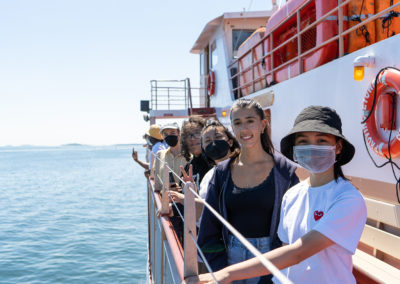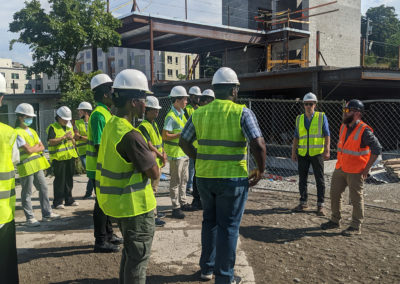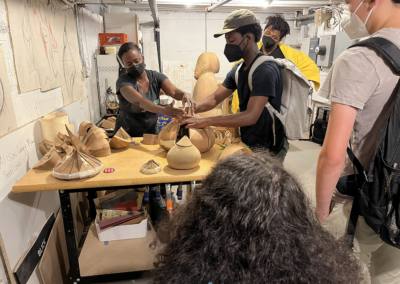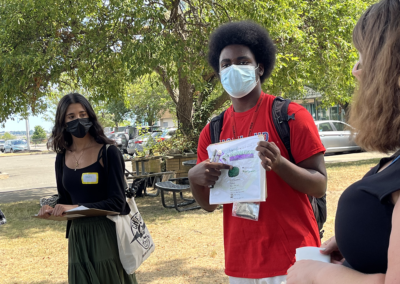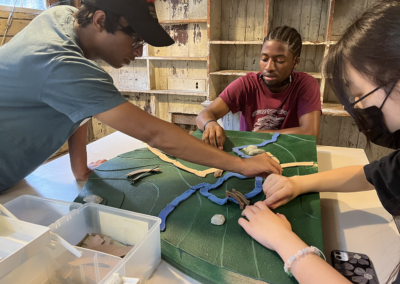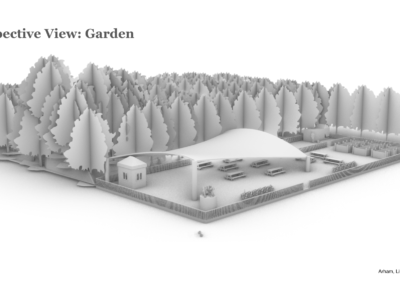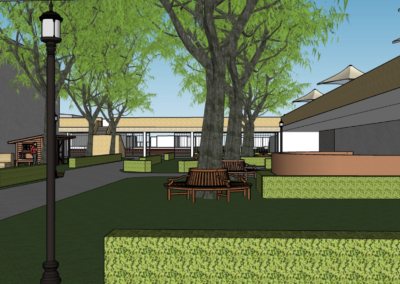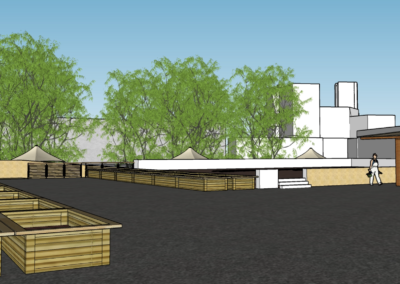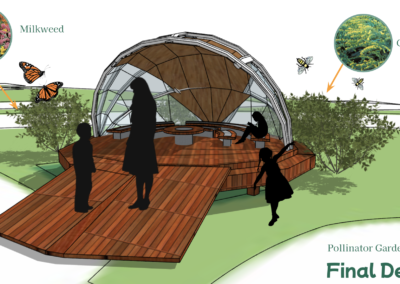This summer, the Sasaki Foundation hosted our fifth annual Summer Exploratory Experience in Design (SEED) program. SEED is a six-week paid internship for high school students from the Boston area. With the help of teaching assistants, Sasaki design mentors, and partner organizations, the students learn about careers in the design field and develop their own projects.
This year, we welcomed eleven high school students from neighborhoods across Greater Boston, including Charlestown, Dorchester, East Boston, Mattapan, Roxbury, Belmont, and Cambridge. After two years of running the program remotely, we had the pleasure of being able to once again host this summer’s internship program at the Sasaki office. It was refreshing to see the design process and collaboration happen in person.
Each week, as part of the design coursework, students attended project presentations and introductory workshops with Sasaki staff to learn about different aspects of the design field. Each week students also had the opportunity to interview a Sasaki principal and were free to ask the leaders anything. Each principal specializes in a different discipline and collectively provided broad and valuable insight on the educational and career pathways they took, the design industry, and impactful projects that Sasaki has spearheaded.
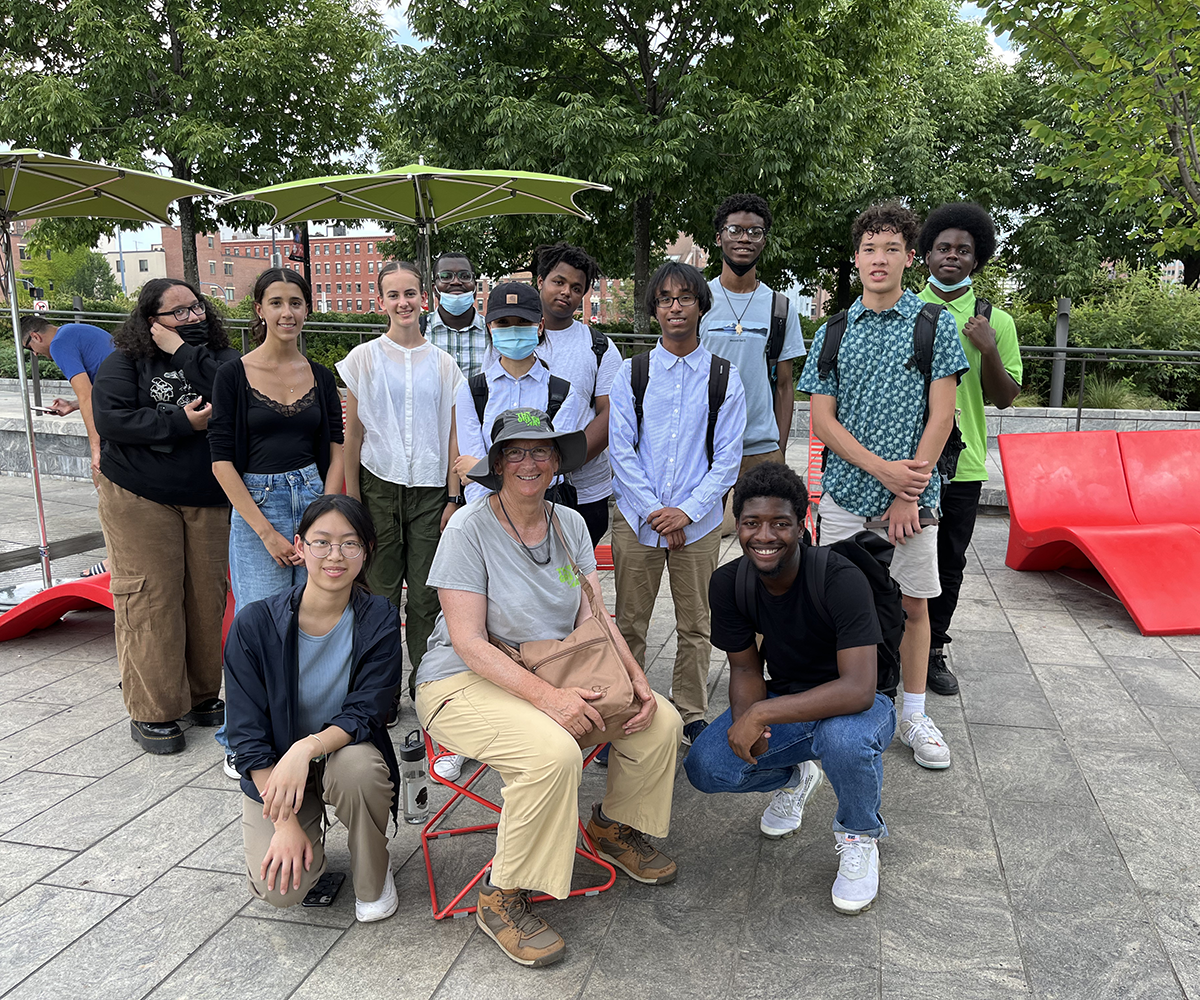
SEED students tour the Rose Fitzgerald Kennedy Greenway
SEED students were also able to explore Boston’s natural and cultural resources. Through the National Park Service they visited the Frederick Law Olmsted National Historic Site in Brookline, and toured Spectacle Island with Save the Harbor/Save the Bay. Students learned about growing food in an urban environment at the Urban Farming Institute in Mattapan, where they also learned about the role of crop diversity in soil and plant health. Students visited the Rose Fitzgerald Kennedy Greenway to learn about the Big Dig and the sustainable horticulture practices that allow the Greenway to thrive in an urban environment. This year’s curriculum also included several project site visits with the Boston Planning and Redevelopment Agency, DREAM Collaborative, and Toole Design Group, and a visit to Alison Croney Moses’s studio.
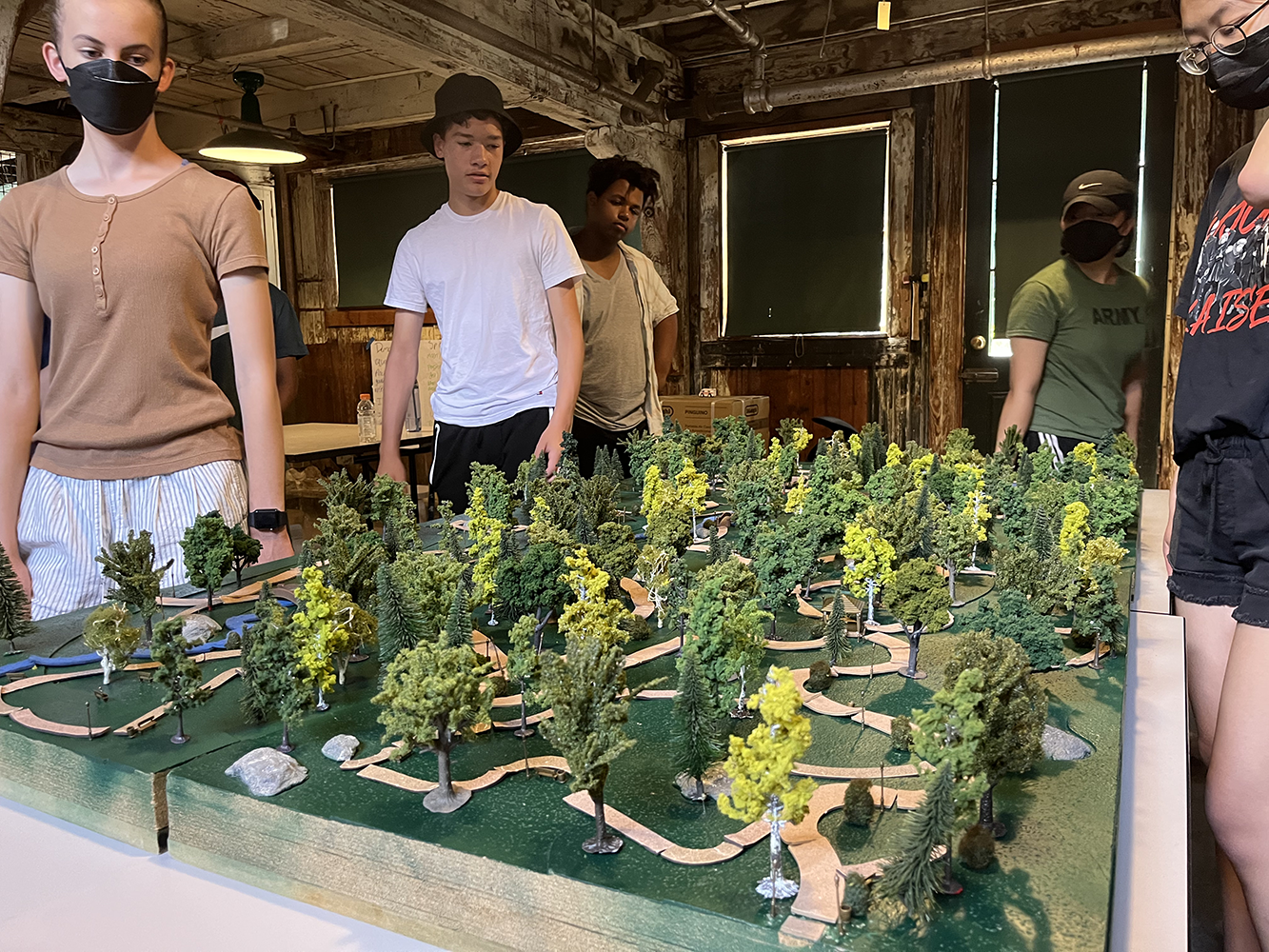
SEED students explore landscape architecture at the Frederick Law Olmsted National Historic Site in Brookline, MA
Throughout the six-week internship, SEED students worked in three small teams to design outdoor garden classrooms for Boston Public Schools (BPS), for use both by BPS students and by their local communities. The project was based on a major initiative by the City of Boston focused on food justice and equitable access within many Boston neighborhoods in an effort to bring food closer to those with the greatest need. SEED focused on how small scale neighborhood interventions can begin to change the level of access for all of Boston’s residents, leading to a healthier, more supported and equitable city.
After careful site analysis, students selected David A. Ellis Elementary School in Roxbury, Mattahunt Elementary School in Mattapan, and the John D. O’Bryant School of Mathematics and Science in Roxbury for their garden classroom projects. Each week’s topic supported the students’ design process, culminating in a final presentation of their project designs to their Sasaki design mentors, Sasaki principals, and other Sasaki staff. It was truly inspiring to see how much work, attention to detail, and dedication they had put into each project.
Overall it was quite a jam-packed summer. The students greatly benefited from each experience, and everything they learned from each mentor, principal, tour, and site visit was interwoven in the design of their projects and delivery of their presentations.
Get a closer look at this summer’s SEED experience on Instagram with #SasakiFdnSEED2022, and watch all three teams’ final presentations on YouTube.
The Sasaki Foundation would like to thank this summer’s TAs: Greggy Bazile and Shemar Stewart, and all of our Sasaki design mentors: Isaac Andrade, Gandong Cai, Nick Dyer, Diana Gallo, Mario Ghosn, Gabe Jenkins, Felicia Jiang, Carrie Latimer, Amanda Lennon, Joude El-Mabsout, Karen Mata Ortas, Yasmin Maura-Orihuela, Mytreyi Metta, Yixin Miao, Emily Parris, Daniel Pryor, and Fangli Zhang.
We also would like to thank the Sasaki principals who took part in the weekly interviews: principal and architect Lan Ying Ip, AIA; CEO James Miner, AICP; principal and urban designer Mary Anne Ocampo; associate principal and architectural project manager/designer Ivelisse Otero, principal and architect Chris Sgarzi, AIA, LEED AP; and principal, landscape architect, and Chair of Design Culture Tao Zhang, ASLA, PLA, LEED AP ND, SITES AP.
A special thank you to Estefany Benitez, Hana Estice, and Matthew Arielly for program support and photography, and to Sydney Bittinger, Diana Gallo, Elango Govindan, Ming-Jen Hsueh, Chetan Kulkarni, Annie Langlois, Jason Ng, Jay Nothoff, Scott Penman, Tristan Rock, Sudeshna Sen, and Lanmuzhi Yang for introducing the students to Sasaki’s various disciplines and a variety of projects.
A final thanks to all of our partners for the time they spent introducing students to their projects and expertise: Alison Croney Moses, Boston Planning and Development Agency, Boston Society for Architecture, Cambridge Savings Bank, DREAM Collaborative, National Park Service (Frederick Law Olmsted National Historic Site), the Rose Fitzgerald Kennedy Greenway Conservancy, Save the Harbor/Save the Bay, Toole Design Group, and the Urban Farming Institute.

